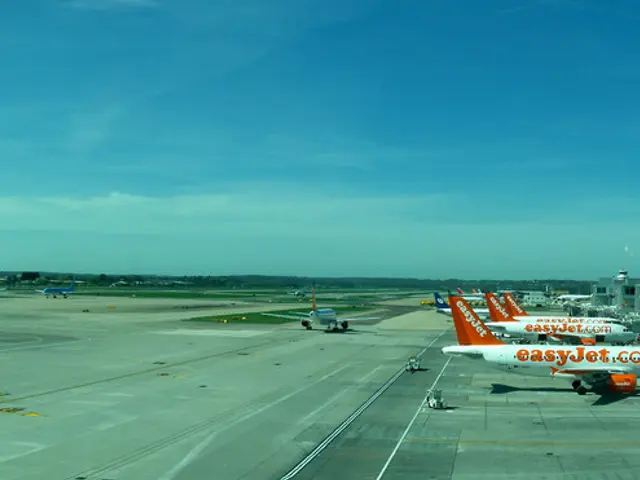Unleashing the Mysteries of Ground Effect in Airplanes
IntentionalGround Effect for Improved Flight Performance in Planes
Ever wondered what happens when an aircraft skims close to the ground? That's where ground effect steps in! This intriguing phenomenon occurs when an airplane is within half its wingspan above the Earth's surface, leading to increased lift and decreased drag due to the interaction between the aircraft's wings and the ground.
In simpler terms, ground effect is all about the way airflow behaves when an airplane gets cozy with Mother Earth. The air beneath the wings compresses, causing an "air cushion" that reduces drag and increases lift, making the airplane more fuel-efficient and easier to handle, especially during takeoff and landing.
The Air Pressure Dance on the Wing during Ground Effect
The distribution of air pressure on a wing's upper and lower surfaces plays a pivotal role in generating lift. Thanks to Bernoulli's Theorem, air moving faster over the upper surface of the wing experiences less pressure, and the opposite is true for the lower surface. This difference in pressure creates the force that keeps the aircraft aloft.
During ground effect, the air pressure changes have a profound impact on the way an airplane behaves. Ground effect can make the aircraft feel "floaty" or more challenging to control, especially for novice pilots.
Taming the Flying Beast: Controlling Ground Effect
For student pilots, understanding and controlling ground effect is vital to mastering their flying skills. As the airplane comes close to the ground, it becomes more sensitive to control movements, requiring extra caution and smooth control corrections.
To succeed in this situation, pilots must coordinate their power and control movements carefully, making gentle, precise inputs, and waiting for the aircraft to slow down before making a smooth landing. Despite the challenges, ground effect has its perks, like improved fuel efficiency and overall performance at very low altitudes, which can be exploited during short takeoffs and landings (STOL), or military evasive maneuvers.
So, the next time you see an airplane gliding gracefully just above the runway, remember the dance of air pressure and ground effect that makes flight possible!
[1] Understanding Ground Effect: Tips for Pilots[2] Ground Effect Explained: The Science of Flight[3] Mastering Ground Effect: Techniques for Student Pilots
- The science of ground effect plays a significant role in health-and-wellness, as its optimization can lead to more fuel-efficient aircraft, reducing carbon emissions in the finance and aerospace industry.
- In addition to improving the performance of airplanes, understanding ground effect is crucial for fitness-and-exercise enthusiasts who participate in flying sports, as it affects the control and maneuverability of the aircraft during close proximity to the ground.
- The principles of ground effect can also have applications in other areas, such as the design of innovative health-and-wellness products or fitness-and-exercise equipment, leveraging the understanding of airflow and pressure behavior to enhance performance and efficiency.






